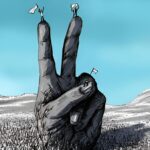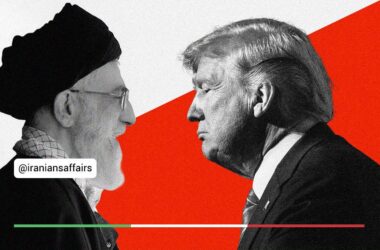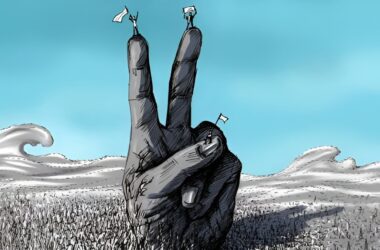The publication of images and videos of a young woman at the Science and Research University continues to draw attention across Persian-language media and social networks. The limited information about her and the reasons behind her attire within the university space have added to the ambiguities. Normally, in university settings, identifying individuals is easier, and various forms of support, such as solidarity, protection, and coordination for a potential act of protest, are available. The solitude of this woman, the lack of support from other students, and even a sense of astonishment, sarcasm, and avoidance by the student body, coupled with the ongoing uncertainty about her identity and the reasons behind her attire, have complicated the social analysis and interpretation of this event.
The prevailing narratives describe this act as a protest against university security, framing it as a symbolic action. Although no signs of confrontation were seen until her arrest and subsequent placement into a vehicle, the systemic discrimination and pressures faced by women, particularly since the widespread protests following the death of Mahsa Amini in September 2022, have laid the groundwork for interpreting this as a form of protest. However, what raises questions within this narrative is the lack of severity or violence from university security forces and pro-government students before any action toward her complete undressing. Throughout the videos and images, numerous students are present, many of whom are known for opposing government policies under different circumstances. Yet, in this instance, they did not support the woman and even reacted with indifference, astonishment, or mockery. Essentially, there were no signs of a symbolic social or political act.
Many argue that this action should be seen as a continuation of the symbolic acts of Vida Movahed or at least akin to the rage of Sepideh Rashno in her confrontation with Reyhaneh Rabii (though comparisons to the “Blue Girl,” the “Qom Mother,” or the woman throwing her scarf on the ground are not made). Unlike those instances, where social and political narratives were established from the beginning, such a narrative did not emerge in this case. Transforming dissatisfaction into protest, politicizing it, and representing it as a social and political act requires not only the necessary context but also a social or political will. In social analysis, one might view this action as devoid of social or political will, much like Mohamed Bouazizi’s self-immolation in Tunisia, expressing anger and despair in the face of systemic humiliation and the loss of future prospects in a manner that may not be replicated by others but could inspire or provoke them. Anger that some elements may find unsuitable for turning into a social movement and might even overlook. Just as the humiliation of the young man by a female officer is excluded from Bouazizi’s narrative, or the psychological state and background of the Science and Research University girl are eventually disregarded.
The failure of the 2022 movement had numerous consequences. The death of Armita Geravand and the government’s management of it in a way that did not spark a new movement sent a serious message to researchers and activists. Analyzing developments over the past two years also reveals that the use of concepts like “women’s revolution” has faced significant challenges. In a context where protests in Iran are not against men but rather against the system (governmental laws and ideology), the use of translated concepts unrelated to Iranian society has been imposed on protest actions by a small group of media and feminists (mostly outside of Iran), failing to explain the dissatisfaction, anger, and resentment prevalent in Iranian society. Given the critical evaluation of protest methods and the focus on beneficial outcomes for society, a large segment of the public now views non-constructive narratives with skepticism. Consequently, they are likely to approach the case of the differently dressed woman at the university with caution. The society’s orientation, considering the government’s control over the individual and the potential release of CCTV footage or statements from her family and acquaintances, may pose challenges for government opponents. It is even possible that the government might refrain from pursuing a political case (an official security file) against this protesting woman.
The key question for government opponents may be: What constitutes genuine resistance, and which forms of struggle will effectively advance a robust movement? Can any act of anger, despair, and resentment qualify as resistance? Does every individual or collective symbolic act have protest value? Should actions be direct and serve a strategic campaign or connect with political and social forces? Without an intelligent confrontation from opponents with such incidents, the hope of prevailing over the government’s will cannot be realized.
The general tendency of the media (especially under the excitement of social networks and the competitive behavior of groups equating visibility with political and social significance) further exacerbates the issues. Unfortunately, that woman did not become a symbol of solidarity within her own university environment. She remained isolated. Even in narrative-building, this may remain the case, failing to serve as a unifying element for mobilizing will and forces. It must be emphasized that without a critical and serious analysis, and without a precise political understanding of such cases, what may seem beneficial might eventually turn into an obstacle on the path to real change.







